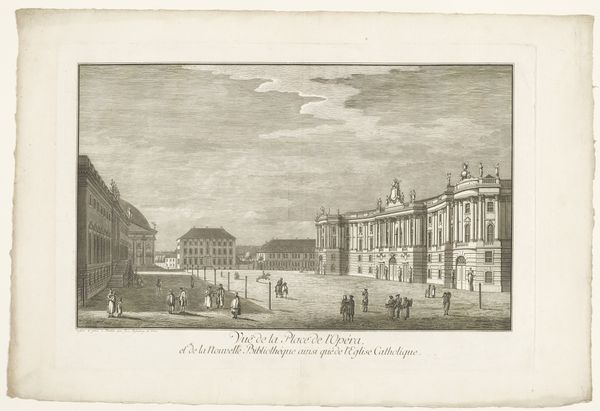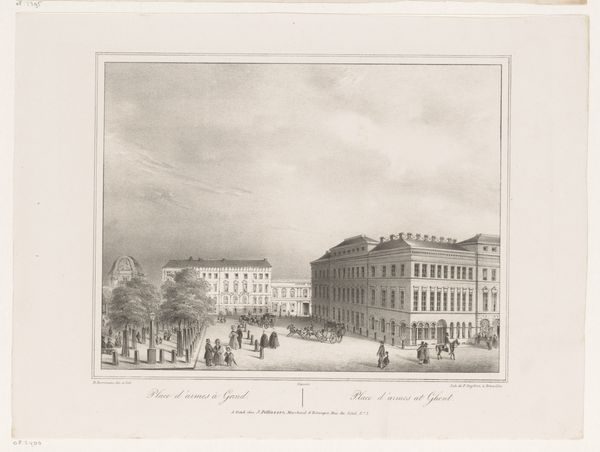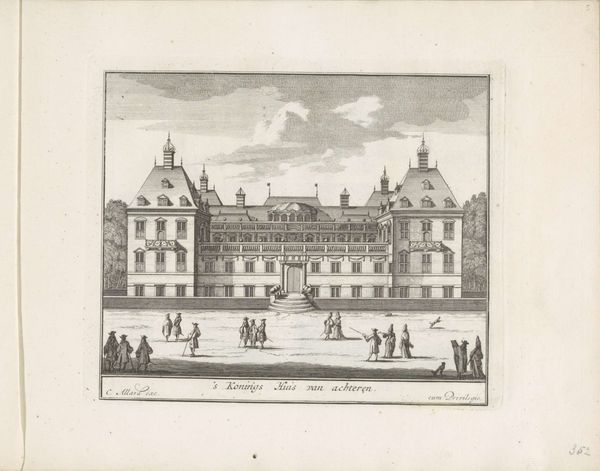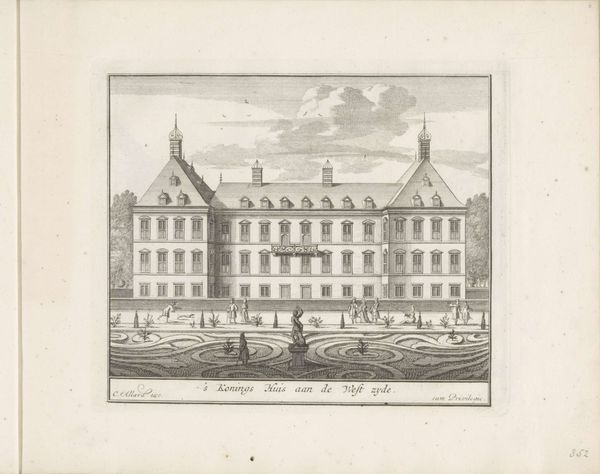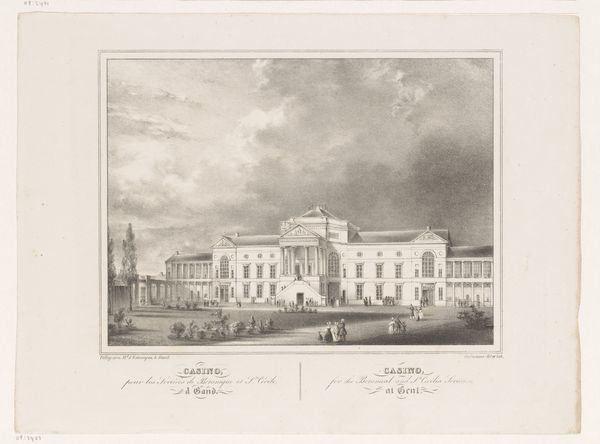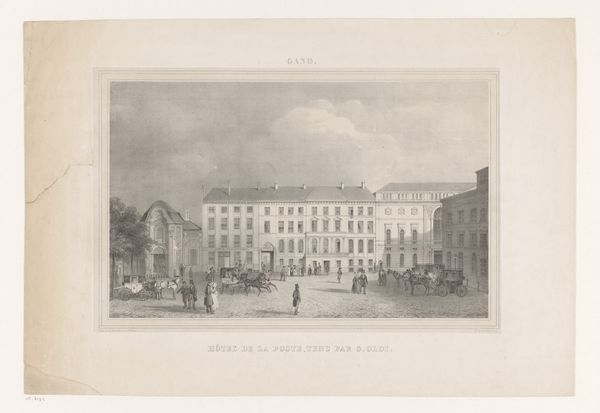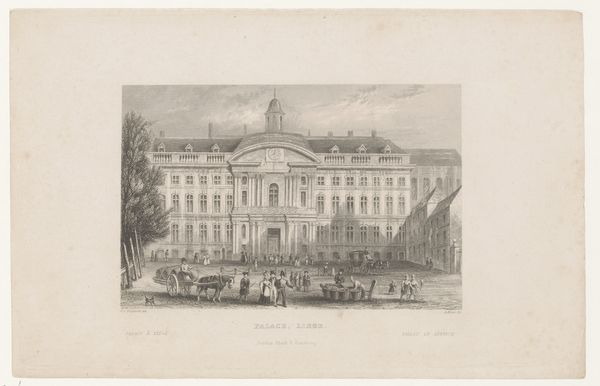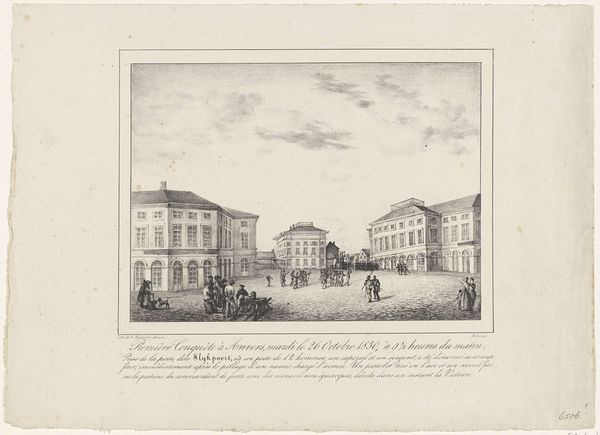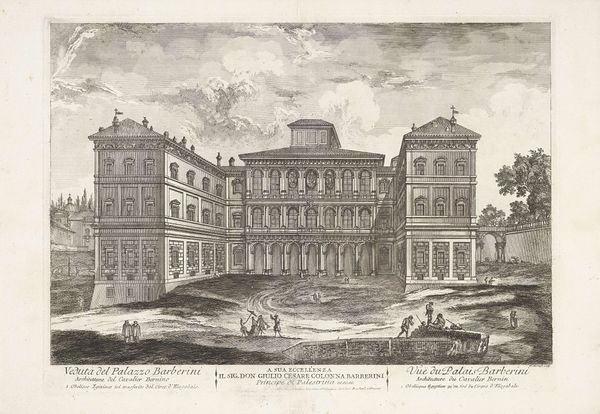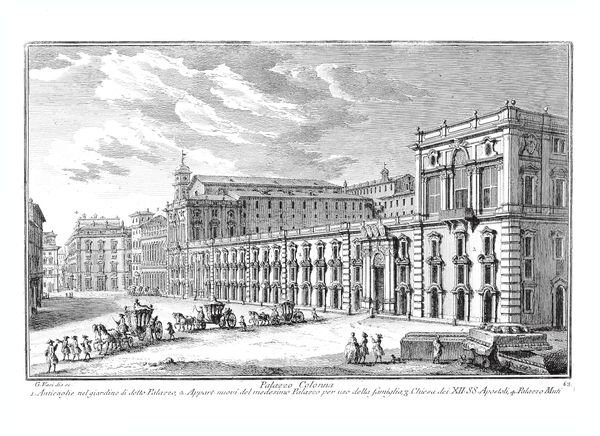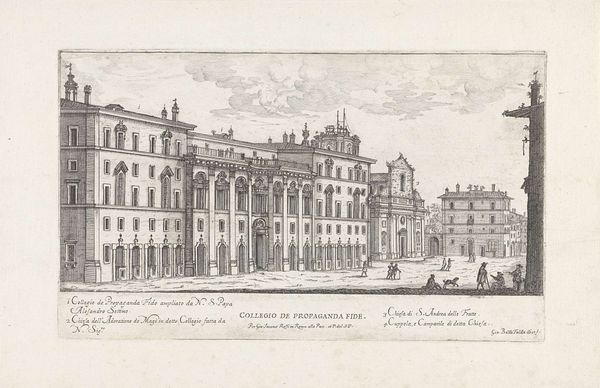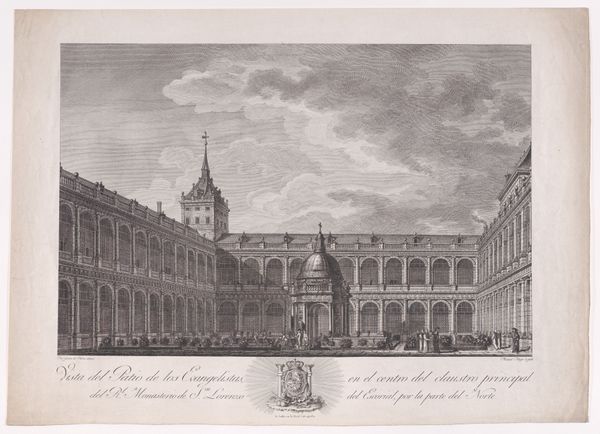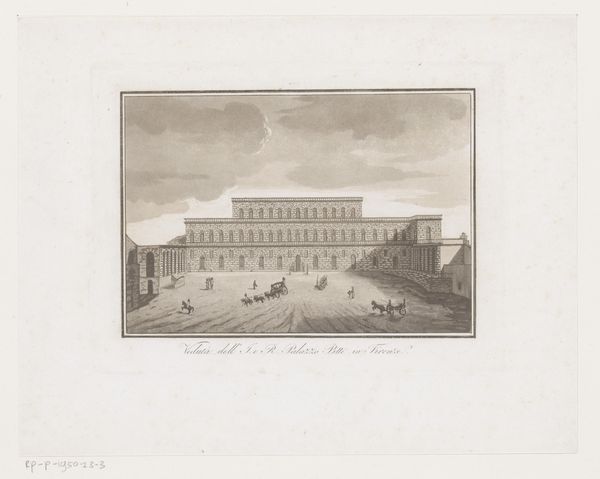
print, engraving, architecture
#
neoclacissism
# print
#
old engraving style
#
archive photography
#
cityscape
#
genre-painting
#
history-painting
#
engraving
#
architecture
#
realism
#
columned text
Dimensions: height 221 mm, width 296 mm
Copyright: Rijks Museum: Open Domain
Curator: Here we have an engraving by Paulus Lauters dating to 1830. It depicts the Nationale Nijverheidstentoonstelling te Brussel, that year’s National Industrial Exposition in Brussels. Editor: My initial impression is one of subdued grandeur. The subtle gradations of gray emphasize the scale of the architecture, while the figures populating the scene provide a sense of ordered activity. Curator: Indeed. It’s important to consider this image was created during a pivotal period in Belgian history, just before the Belgian Revolution. These exhibitions were, in part, designed to bolster national pride and economic strength under Dutch rule. Editor: You can see the Neoclassical architectural style reinforces a sense of order and control. The engraving, with its emphasis on line and form, gives a very stable, almost idealized vision of society. It’s a statement about progress, rendered meticulously in grayscale. Curator: Absolutely. This was also a moment when printmaking was becoming increasingly important for disseminating ideas and shaping public perception. So, this engraving wasn't just documenting an event; it was actively participating in creating a visual narrative of national identity. Consider the precise lines used to render both the grand architecture and the figures within. Editor: Precisely, each stroke contributes to an overwhelming sense of depth and texture. Look how the repetition of columns and windows adds to the almost rhythmic composition, subtly guiding our eye across the whole image. The balance between open space and filled areas creates a kind of visual equilibrium, underscoring a harmonious depiction of industrious activity. Curator: And within that harmonious depiction, of course, were underlying tensions and social stratifications, represented here by the different classes mingling but carefully segregated within the frame. While the exposition sought to unify the nation, in practice the benefits of industrial progress weren’t evenly distributed. Editor: Interesting. So, from a formal perspective, it’s presenting order, but you’re saying, this also hints at deeper social imbalances? Curator: Yes, it encapsulates the complexity of early 19th-century Europe: a façade of order masking socio-political dynamics ready to bubble to the surface. Editor: Fascinating! I came for the clean lines, but now I see that what appears stable on the surface is more nuanced once you consider it contextually. Curator: Exactly. And that's why considering historical context enhances our formal appreciation.
Comments
No comments
Be the first to comment and join the conversation on the ultimate creative platform.
